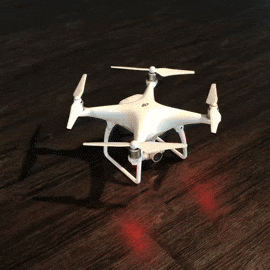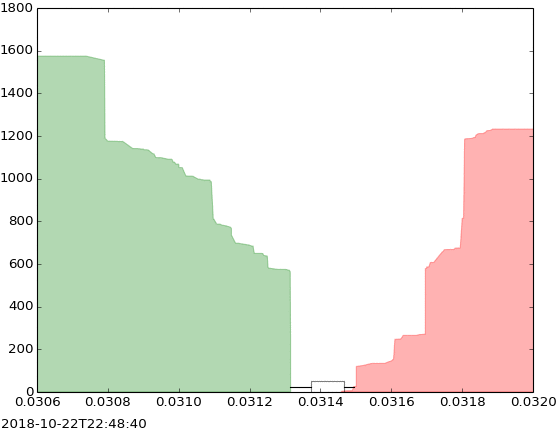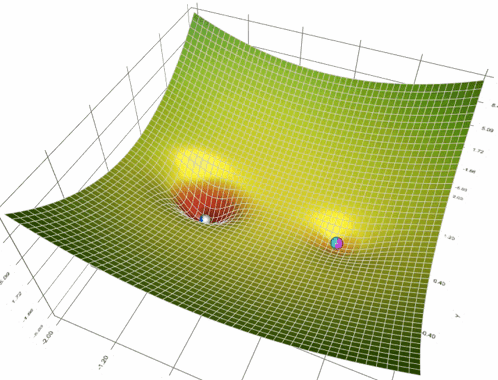Research
Papers under review/submission and pre-prints are available upon request.
2025
- Preprint
 Breaking the Domino Chain: Using Causal AI to Anticipate and Reduce Manufacturing DowntimeHrishikesh Singh, Aarti Sharma, and Millie Pant2025
Breaking the Domino Chain: Using Causal AI to Anticipate and Reduce Manufacturing DowntimeHrishikesh Singh, Aarti Sharma, and Millie Pant2025One of the significant challenges of manufacturing industries is downtime which could be attributed to different causes, including a process or component failure. One such significant industry is Aluminium casting industry where downtime causes significant financial loss hence impacting production efficiency and increasing cost. We propose a novel framework which helps in downtime prediction using deep learning. In addition, we utilize Causal AI techniques to identify the underlying causes and the cascading failure subcomponent topological order, which influenced the downtime impact. We employed supervised machine learning for downtime prediction and causal AI techniques, including the PC (Peter-Clark) algorithm and Granger Causality for gaining insight into operational dependencies to improve the production workflow.
@misc{singh2025dominocasualai, title = {Breaking the Domino Chain: Using Causal AI to Anticipate and Reduce Manufacturing Downtime}, author = {Singh, Hrishikesh and Sharma, Aarti and Pant, Millie}, year = {2025}, primaryclass = {cs.CV}, dimensions = {true}, google_scholar_id = {u5HHmVD_uO8C}, } - Poster
 Autonomous Drone Swarm Navigation in a 2D Grid Environment Using Reinforcement LearningHrishikesh Singh, Aarti Sharma, and Millie Pant2025
Autonomous Drone Swarm Navigation in a 2D Grid Environment Using Reinforcement LearningHrishikesh Singh, Aarti Sharma, and Millie Pant2025@misc{singh2025drldrone, title = {Autonomous Drone Swarm Navigation in a 2D Grid Environment Using Reinforcement Learning}, author = {Singh, Hrishikesh and Sharma, Aarti and Pant, Millie}, year = {2025}, primaryclass = {cs.CV}, dimensions = {true}, google_scholar_id = {u5HHmVD_uO8C}, }
2024
- P2P
 Pixels to Prose: Understanding the art of Image CaptioningHrishikesh Singh, Aarti Sharma, and Millie Pant2024
Pixels to Prose: Understanding the art of Image CaptioningHrishikesh Singh, Aarti Sharma, and Millie Pant2024In the era of evolving artificial intelligence, machines are increasingly emulating human-like capabilities, including visual perception and linguistic expression. Image captioning stands at the intersection of these domains, enabling machines to interpret visual content and generate descriptive text. This paper provides a thorough review of image captioning techniques, catering to individuals entering the field of machine learning who seek a comprehensive understanding of available options, from foundational methods to state-of-the-art approaches. Beginning with an exploration of primitive architectures, the review traces the evolution of image captioning models to the latest cutting-edge solutions. By dissecting the components of these architectures, readers gain insights into the underlying mechanisms and can select suitable approaches tailored to specific problem requirements without duplicating efforts. The paper also delves into the application of image captioning in the medical domain, illuminating its significance in various real-world scenarios. Furthermore, the review offers guidance on evaluating the performance of image captioning systems, highlighting key metrics for assessment. By synthesizing theoretical concepts with practical application, this paper equips readers with the knowledge needed to navigate the complex landscape of image captioning and harness its potential for diverse applications in machine learning and beyond.
@misc{singh2024pixelsproseunderstandingart, title = {Pixels to Prose: Understanding the art of Image Captioning}, author = {Singh, Hrishikesh and Sharma, Aarti and Pant, Millie}, year = {2024}, eprint = {2408.15714}, archiveprefix = {arXiv}, primaryclass = {cs.CV}, dimensions = {true}, google_scholar_id = {u5HHmVD_uO8C}, doi = {https://doi.org/10.48550/arXiv.2408.15714}, url = {https://arxiv.org/abs/2408.15714}, } - BAMS
 Financial Context-Aware Multiagent-Based Reinforcement Learning Approach for Indian Stock Portfolio OptimizationHrishikesh Singh, Aarti Sharma, and Millie Pant2024
Financial Context-Aware Multiagent-Based Reinforcement Learning Approach for Indian Stock Portfolio OptimizationHrishikesh Singh, Aarti Sharma, and Millie Pant2024In modern financial markets, more than 3/4th of the large volume trade is executed by algorithmic trading based on advanced trading strategies to attain higher precision and speed than traditional human traders. The conventional strategies focused on price-based indicators are inadequate in capturing the market dynamism arising from real-world events such as social sentiments, political instability, or sudden economic shifts. With the rise of Deep Reinforcement Learning(DRL) and data availability, there is a requirement for more efficient algorithms that can incorporate these external factors in trading strategies. DRL has shown potential in simulating real-world scenarios and in simplifying complex decision-making since DRL agents can automate the trading process i.e. executing trades in a manner comparable to human traders. They have shown reliable performance since they can update their policies based on risk and quantitative factors. In this paper, we propose a DRL approach based on partial and deep-infusion of sentimental analysis. It features distinct policy designs of actor-critic-based agents: only policy optimization (A2C and PPO) and policy optimization along with Q-learning principles (DDPG, TD3 and SAC). Our findings reveal, that the agents based on policy optimization combined with Q-learning, significantly and consistently demonstrate improved performance upon sentiment deep-infusion in profit maximization as well as risk-averse trading.
2018
- IC3
 Empirical Analysis of Bitcoin Market Volatility Using Supervised Learning ApproachHrishikesh Singh, and Parul AgrawalInternational Conference on Contemporary Computing (IC3), Aug 2018
Empirical Analysis of Bitcoin Market Volatility Using Supervised Learning ApproachHrishikesh Singh, and Parul AgrawalInternational Conference on Contemporary Computing (IC3), Aug 2018Cryptocurrencies are considered as the next model of economics and monetary exchange. In recent years, popular cryptocurrency such as Bitcoin and Ethereum witness an exponential growth in economic sphere. In this paper empirical testing of four conventional machine learning methods is performed to predict the bitcoin prices using last eight years of transactional data. Linear and polynomial regression is implemented using all the features individually. Polynomial regression, Support Vector regression and KNN regression are hyper tuned with grid search logic. Results depicted that KNN regression outperformed others models.
@article{IC3, title = {Empirical Analysis of Bitcoin Market Volatility Using Supervised Learning Approach}, author = {Singh, Hrishikesh and Agrawal, Parul}, journal = {International Conference on Contemporary Computing (IC3)}, volume = {47}, issue = {10}, pages = {1--5}, numpages = {5}, year = {2018}, month = aug, publisher = {IEEE}, doi = {10.1109/IC3.2018.8530636}, url = {https://ieeexplore.ieee.org/document/8530636}, dimensions = {true}, google_scholar_id = {u5HHmVD_uO8C}, }